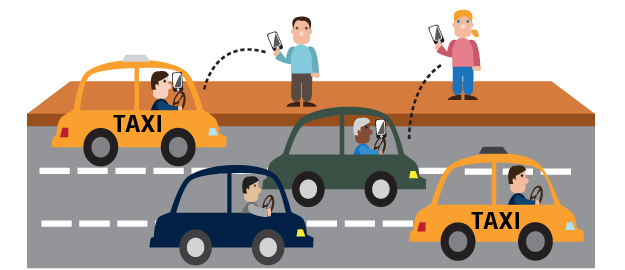Business travellers around the world feel marginally safer in taxis than in ride-sharing services, according to research commissioned by Carlson Wagonlit Travel, the global travel management company.
Around two in five (39%) business travellers surveyed said they feel somewhat or very vulnerable about their personal safety in ride-sharing services, compared with 36% for taxis.
Business travellers from Asia-Pacific are the most concerned overall: 43% feel worried using ride-sharing services and 39% when taking a taxi. In the Americas, the numbers are 40% and 39% respectively, and in Europe 34% and 28%.

Female business travellers in Europe and Asia-Pacific are more likely to feel nervous about personal safety in ride-sharing services or taxis than men.
Looking at ride-sharing, 56% of Asia-Pacific women feel very/somewhat nervous versus 38% of men. For taxis, that is 48% and 35% respectively. In Europe, the differences are less pronounced. For ride-sharing, the numbers are 38% for females versus 31% for males. For taxis, it is 36% versus 22%. In the Americas, there is no statistical difference between genders.
Even though ride-sharing is associated with the younger generation, the findings show that these travellers are more concerned about personal safety. Millennials, in all regions, are the most worried, followed by gen X travelers and baby boomers.
In Asia-Pacific, half of the millennial travellers are very/somewhat concerned when using a ride-share service, followed by 44% of gen X and 35% of boomers. In the Americas, the percentages are 47% for millennials, 42% for gen X and 29% for boomers. In Europe, the numbers drop to 44%, 34% and 21%, respectively.
These differences might be down to gender. According to the research, gender differences appear to track the differences seen between generations. This may be because males are more likely to travel for business the older they get, but the opposite is true of female business travellers. The younger women are, the more likely they are to travel for business.
The sharing economy presents both opportunities and challenges for corporate travel programs. In some cities ride-sharing services can be considerably cheaper than taxis or car rental services, while also providing greater convenience to travellers. On the other hand, traveller safety and the legality of these services in various markets remain important concerns. As a result, corporate travel policies around the sharing economy can vary widely from one company to the next.
“Ride-sharing services may be right for some corporate travel programs but not for others,” said Bhatia. “Whether the sharing economy is a good fit for a company will depend on their company culture, their traveller demographics and their risk management policies, among other things. Either way, companies should create travel policies that define if, when and how travellers can use these services, and communicate these clearly to their employees.”
How safe is ride sharing
